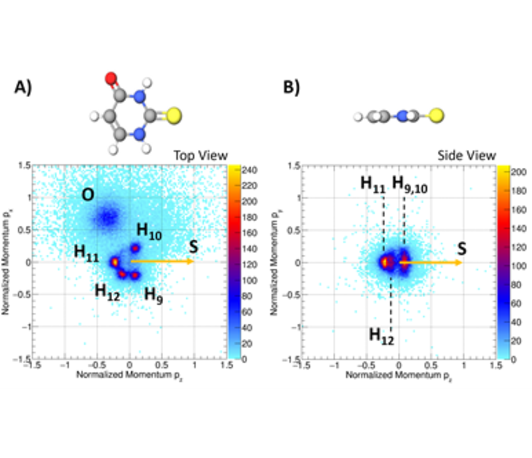Watching Femtosecond Molecular Dynamics using Synchrotrons and X-Ray Free-Electron Lasers
- MP Department Seminar
- Date: Nov 3, 2023
- Time: 09:30 AM c.t. - 10:30 AM (Local Time Germany)
- Speaker: Till Jahnke
- https://www.uni-frankfurt.de/50495969/Prof__Dr__Till_Jahnke
- Location: Haber Villa
- Room: Seminar Room
- Host: Department of Molecular Physics
- Contact: trinter@fhi-berlin.mpg.de

Figure 1: Momentum-space image of a 2-thiouracil molecule fragmented in a Coulomb explosion. Shown are the protons and the oxygen atom.
Since almost five years a dedicated COLTRIMS reaction microscope [1,2] is available at the SQS-instrument of the European X-ray free-electron laser, which was used recently to perform Coulomb explosion imaging (see Fig. 1) and Photoelectron diffraction imaging measurements. Some examples will be presented in the talk. The COLTRIMS technique is a powerful coincidence measurement approach, which allows in addition to examine in some cases molecular dynamics on a femtosecond time scale without the need for ultrashort light pulses. The talk will present some examples of synchrotron-based measurements along this theme, as well.
References
[1] J. Ullrich et al., Rep. Prog. Phys. 66,
1463(2003).
[2] T. Jahnke et al., JESRP 141, 229(2004)